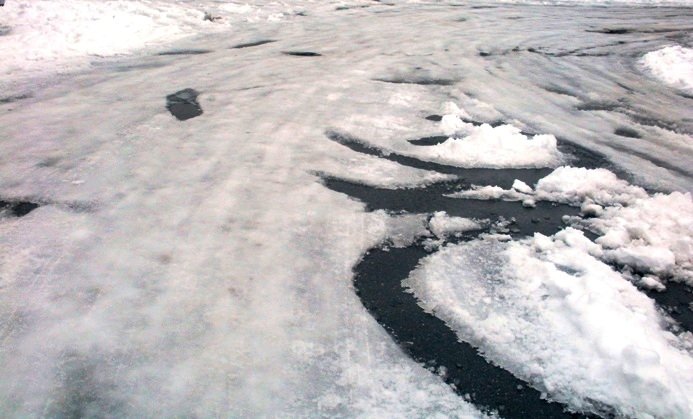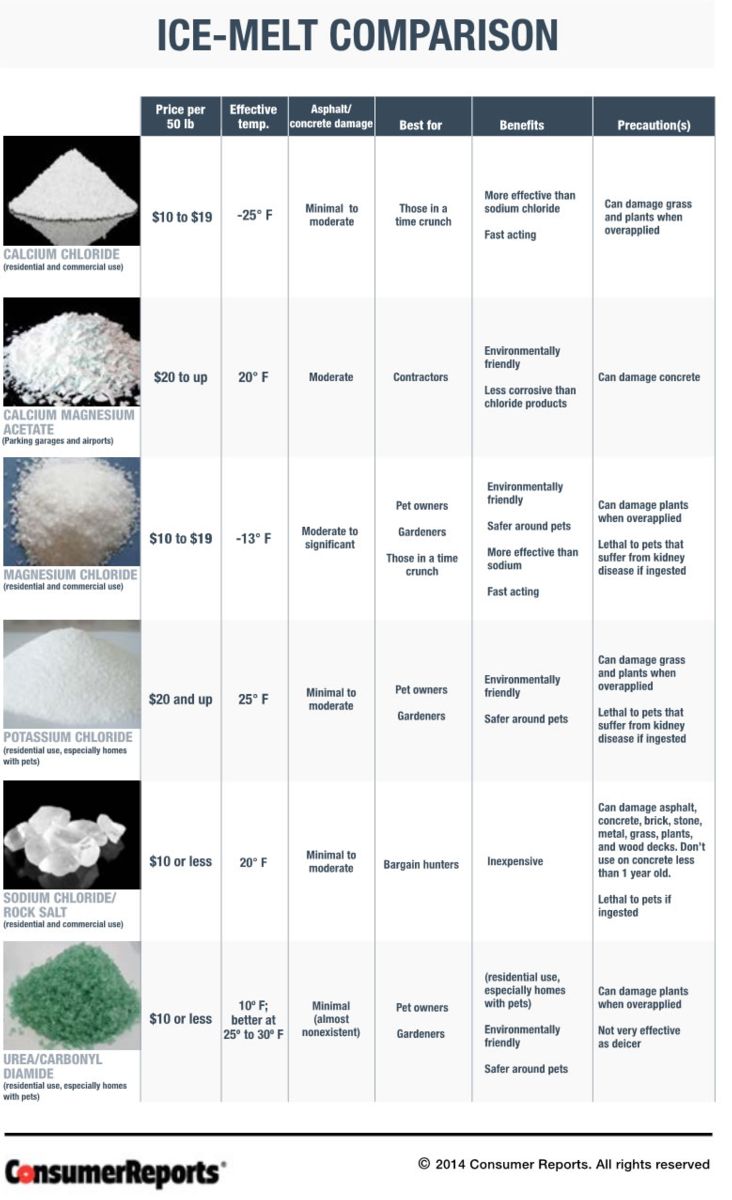
We know, we know. It’s too early to think about winter. But whether we like it or not, winter is coming. It has snowed as early as late October in this area, so those first flakes aren’t that far off.
Now’s the perfect time to start preparing your property by ordering ice melt products that can make a difference to your business, your tenants, and the environment. You can score a real win-win-win with environmentally friendly ice melts that keep your tenants safe, keep your floors clean, and keep toxic chemicals out of the ground.
One category we recommend is called green ice melt. This includes products like CMA®, Green Earth Ice MelterTM, Happy Paws Ice MeltTM, NAAC®, and SubZero 20 Ice MeltTM, all found at www.greenicemelt.com. There are also a number of liquid ice melts available there too.
We strongly recommend avoiding products with calcium chloride, which are usually referred to as plain “Ice Melt” or “Rock Salt.” These do a number on carpets and floors. The corrosive effects range from floors looking irreparably dirty, to losing their luster or shine, to needing complete stripping and re-waxing.
How Much Do You Need?
One of the best ways to predict your usage this year is by examining your inventory from last year. Did you run out and have to buy more? This winter is predicted to be “super cold” according to the 2016 Farmer’s Almanac, with “freezing temperatures along most of the Atlantic seaboard,” so having enough stock on hand will be critical.
If you cannot store one winter’s worth of ice-melt in your location, you might want to seek out more than one supplier in advance, as retail stores and other distributors frequently run out when the weather gets bad.
The bottom line is that it’s important to plan ahead. Plus, ordering early means there are preseason sales that save you money in the long run.
So yes, it’s only October. But snow, sleet, and slick season is just around the corner. Place your orders now and you can check one more item off your list.
Which Ice Melt Makes Most Sense?
There’s a large variety of ice melts offered on the market these days. While having a choice is great, the sheer number of pros and cons can get a bit confusing.
With the help of Consumer Reports and their comprehensive chart, we’re here to clear them up!
Ice melt goes by several names. You might see it called snowmelt, deicer, or even rock salt. The best ice melts will create a safe pathway for vehicles or pedestrians, be environmentally friendly, and leave the least mess in your hallway.
Your Choice
The following chart gives a brief overview of calcium chloride, calcium magnesium acetate, magnesium chloride, potassium chloride, sodium chloride (rock salt), and urea (carbonyl diamide). As you can see, four of the six are rated “environmentally friendly.” There are other factors to consider as well, including how quickly they work, what they cost and their overall effectiveness. Using this chart, you can decide which ice melt works best for your business.
From a cleaning standpoint, we recommend avoiding calcium chloride and sodium chloride because they can wreak havoc on floors, making them look dirty, stripping their luster and shine, and even necessitating a full-out refinishing. Neither is environmentally friendly, as you might imagine.

Last year, we had a rough winter. And the prediction is for another very cold winter coming up. It makes sense to order now so you’re not caught with a shortage that leads to slippery conditions for tenants and visitors. Placing your order now also means that you can take advantage of preseason sales.
So take a look at our chart and take your pick. Here’s to a safe, happy ice-free winter!
Ice, Begone!
4 Deicing Do’s
Ice melts work because they break the pavement-ice bond so ice can easily be removed. They can even be applied even before a storm for to prevent ice buildup.
But deicing is no fun. As the winter drags on, clearing ice and snow becomes even more of a drag. This chore needs to be handled timely and expeditiously, to ensure you’re keeping tenants and visitors safe.
Here are four easy ways to keep your paths and parking lots clear and clean:
- Remove snow
This is the hardest part. With a plow, blower, or even hand shovel, clear as much of the snow as you can. - Make sure the ice melt is applied correctly
To get an even spread that melts ice most effectively, it’s worth investing in a small spreader, either with wheels or a handheld. These machines distribute a nice, thin layer. To maintain your spreader, rinse between uses. Don’t have a spreader? Don some gloves and grab a bucket. Just try to even out the ice melt with a broom. - Watch surfaces
Since many paved surfaces can be damaged by ice melts, it’s important not to over-salt the area. Note the recommended amounts for specific surfaces. Any type of magnesium, especially magnesium chloride, will hurt concrete. Acetates can damage asphalt. Instead, you can sand, kitty litter or sawdust to do the trick. If your concrete is less than one year old, we recommend using gravel or sand instead. And keep ice melt of these types away from your lawn and plants. - Safety first, especially for kids and pets
If a child ingests ice melt, it can be toxic coming up too, so don’t force vomiting. Instead, call the American Association of Poison Control Centers (800-222-1222) and visit the ER. For pets, try using Safe Paw® or Morton® Safe-T-Pet®. These are salt-free, but be careful since they can still harm pets. You can be safest by using colored ice melt, which makes it easy for pet owners to avoid.
These small steps can make a big difference in your tenants’ and visitors’ safety. Keep it simple and you’ll keep it safe.
*A big thank you to Consumer Reports for these recommendations.
Minimizing Environmental Damage with Ice Melts
We encourage environmentally friendly ice melts wherever possible, but we understand that sometimes cost, time, and effectiveness considerations preclude you from using them. The largely environmentally unfriendly salt-based ice melts tend to be fastest acting and wallet friendly.
These are ice melts like sodium chloride, magnesium chloride, (which is considered environmentally friendly in the right amounts) and calcium chloride. Unfortunately, salts go beyond harming the immediate area, to affecting something as critical as our water supply. When you must use them, the first step is to minimize, minimize, minimize the amount, while still maintaining safe thoroughfares.
What Are the Repercussions?
Salt can cause great damage to our plant life, our infrastructure, and our water supply.
Extra salt carried by the wind, run-off, car spray, or other manner damages grass, shrubbery, and other plants and trees. Since salt (and most noticeably rock salt) dehydrates plants, you’ll see foliage damage; it also stunts roots and harms stems, flowers, leaves, and seeds.
You can also see damage to infrastructure, like bridges, roads, parking areas, sidewalks, doorways and flooring. Chloride increases water’s conductivity and thereby hastens corrosion. Extra salt is so powerful it can also break apart concrete that’s not cured or sealed correctly – as well as structural rods and steel – yes steel. Plus, when it comes to building interiors, salt can make your floors look dingy or dirty – or even require a full blown refinishing!
This salt also travels in run-off from hard surfaces and then becomes part of our water supply. Chloride kills a variety of freshwater animals, including fish, insects, macro invertebrates, and amphibians. The only way to remove its contaminants is by diluting the salt with more water to decrease the concentration, and that is not fail-proof.
So think before you spread. A little salt goes a long way, and keeping the balance between ice safety and the safety of our resources makes a huge difference now and for the future of our planet. Your tenants and visitors will thank you. And so will your floors!








